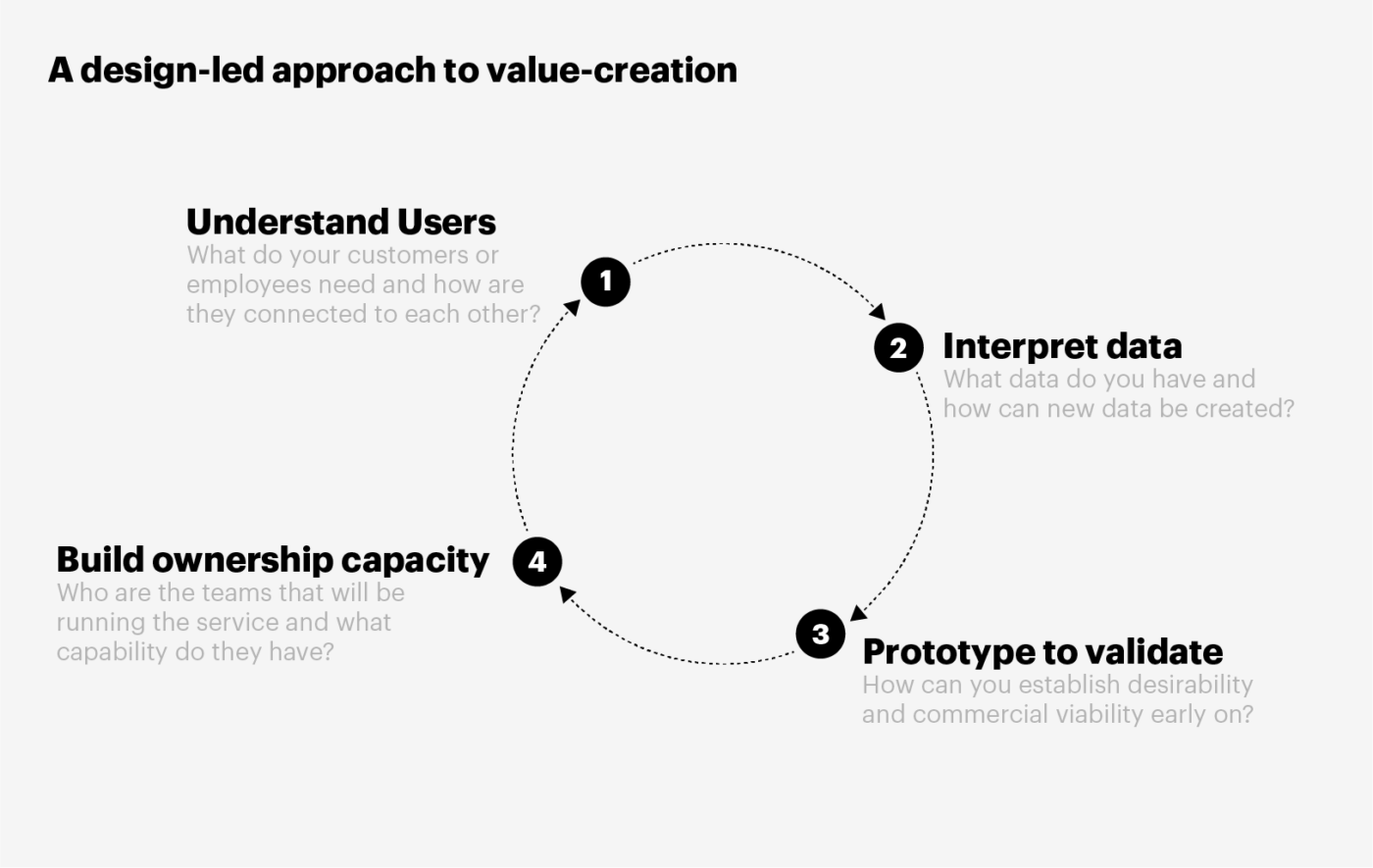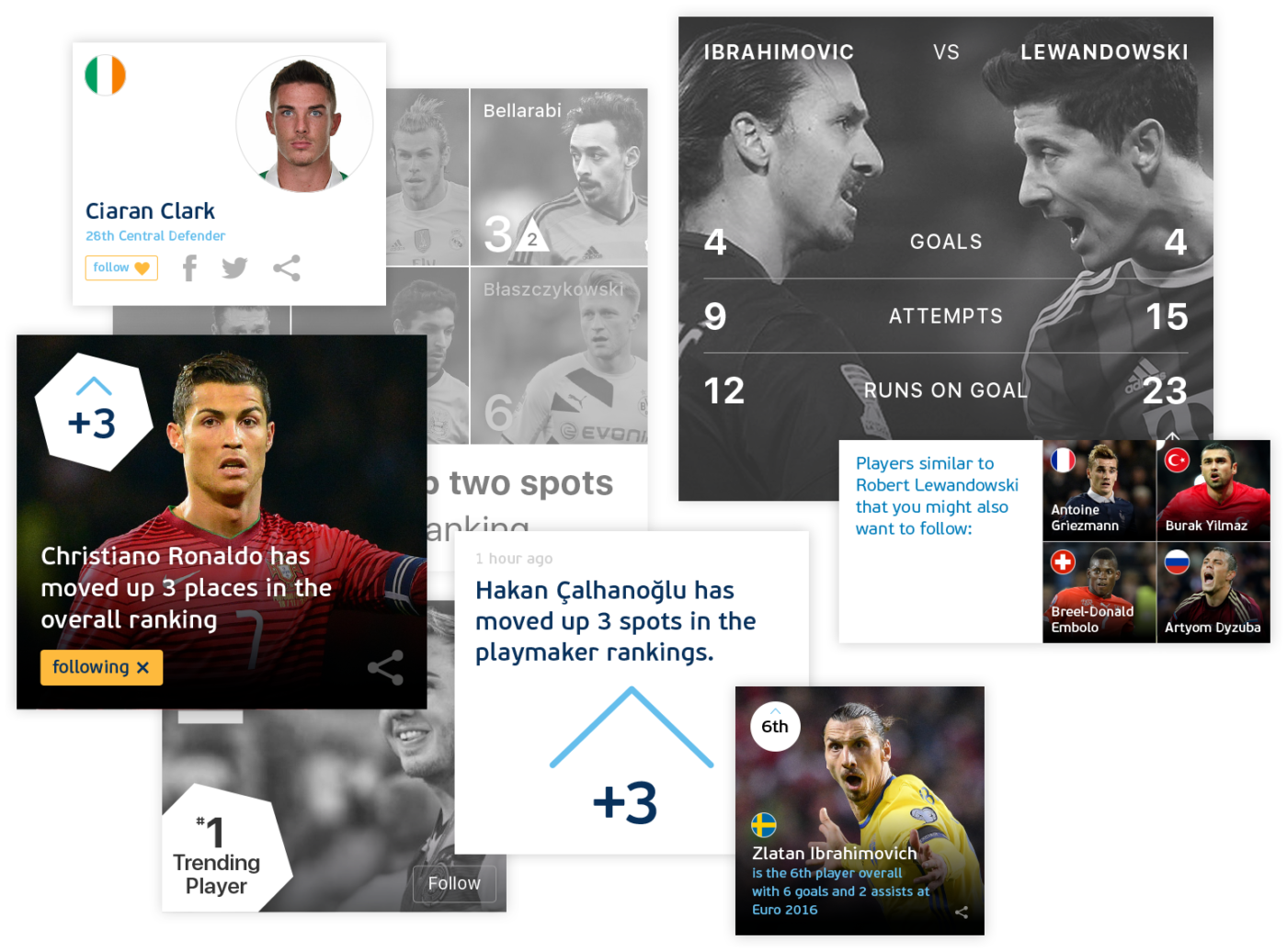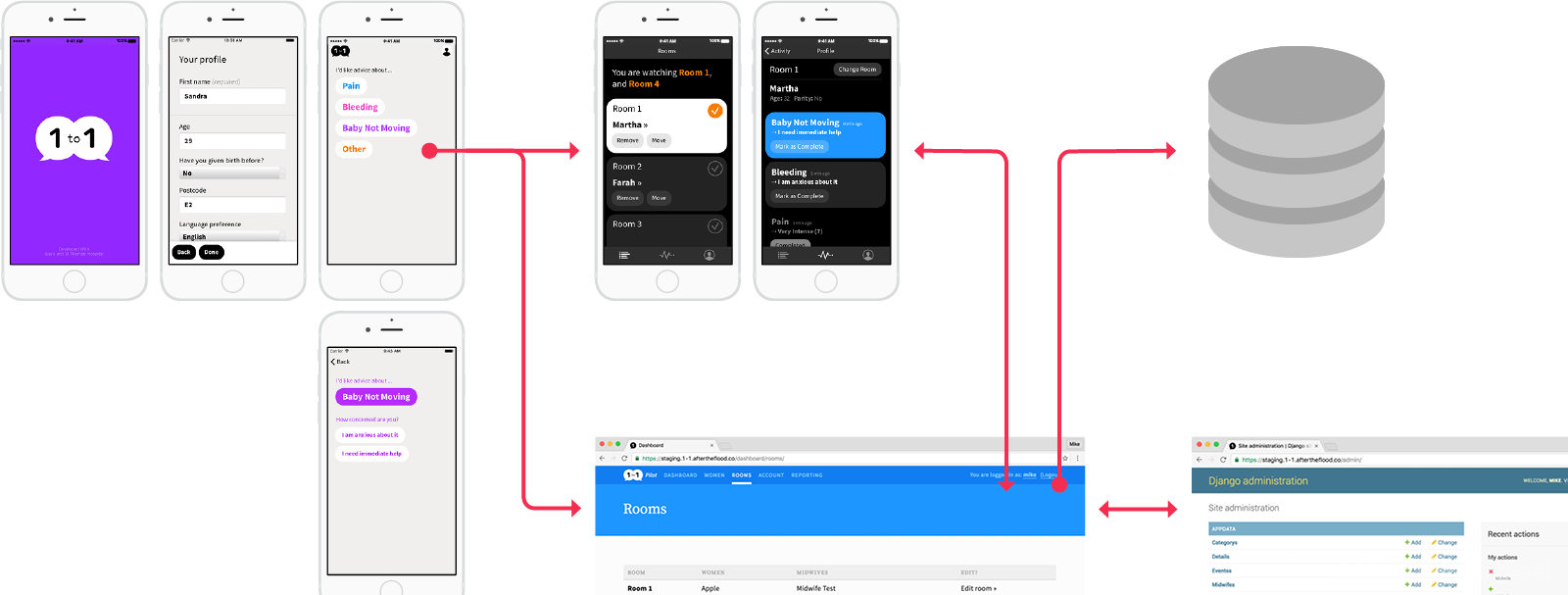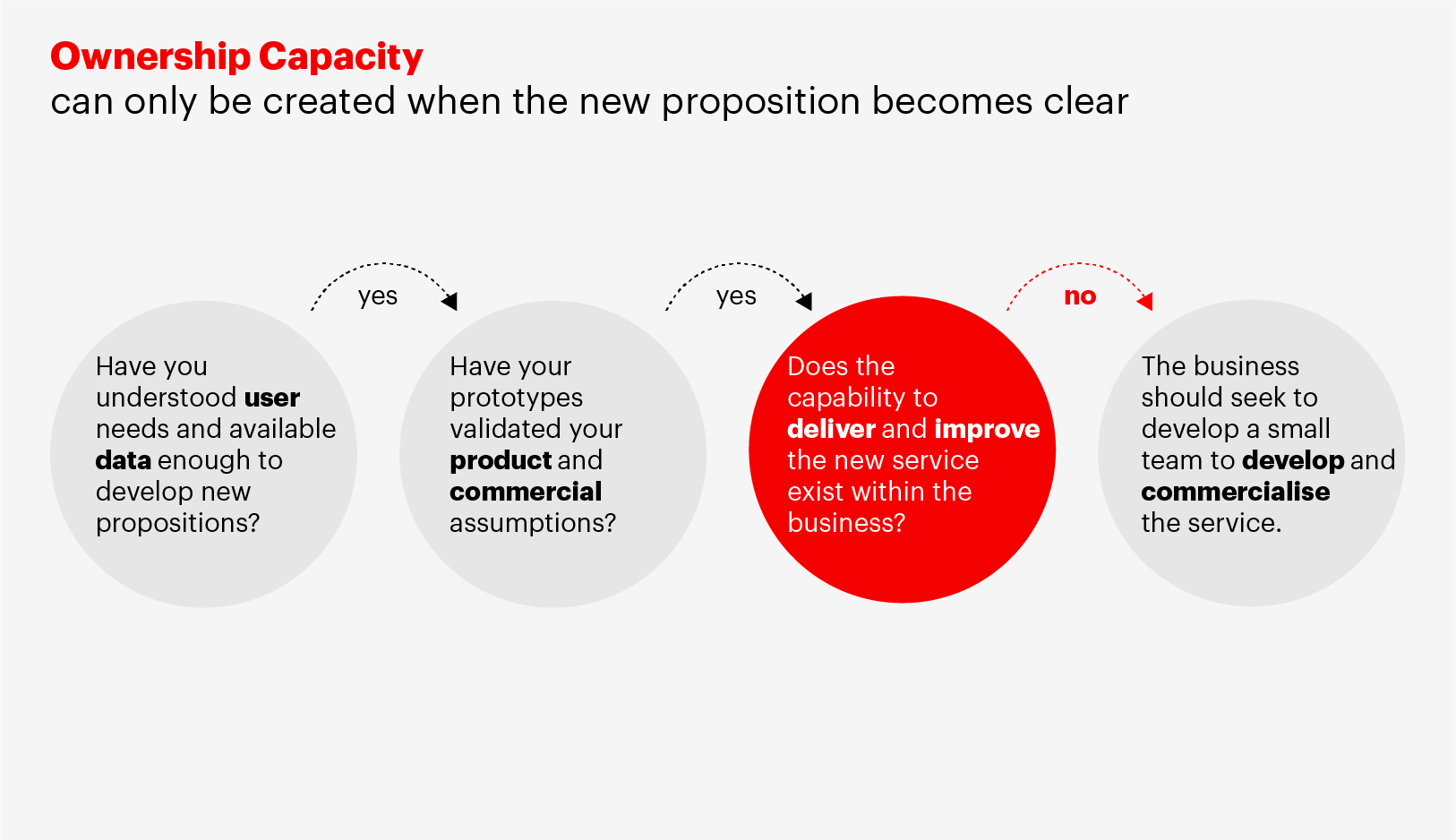In summary:
- The creation of value today requires a radically different approach because of data.
- Standard definitions of “data” and “value”, miss the massive creative power of data for any organisation.
- A new, design-led approach to data unlocks new and transformative kinds of value.
The 21st-century business is different because of data
There is a sharp and growing divide between businesses and organisations that recognise, work with, and make data and those that don’t. And the significance of data is broader—by an order of magnitude—than most of us realise when it comes to the creation of value. Standard estimations of “data” and “value”—while massive in economic terms (£54 billion per year for the UK alone according to CEBR, 2016)—neglect data’s potential as a creative material.
Organisations face more (and more intense) competition—from within their industries, from the tech giants, and from start-ups.
They are often unable to develop new services that could realise new business value because of a lack of experience and capability in developing products powered by data.
Data as a source of value for any organisation
A business is a system that must create more value than it consumes. Typically, a business uses resources, materials, and methods to bring more money in than it spends.
But “value” can mean many different things to any organisation, in any sector. Value might be fiscal (profit), operational (utility, efficiency), strategic (allowing foresight, or insight), or reputational (influence, relationships).
The best uses of data underpin—and in some cases are—the value
These categories break down further: for most organisations, more literal value will consist of some combination of products, services, and intellectual property. For others—say, a charitable organisation—the value may manifest as social change, utility, or profile.
The best uses of data underpin—and in some cases are—the value, across all these areas. And across sectors, every business and organisation either ignores data, or approaches data in ways that can be improved—especially in creating new intellectual, products, data and services.
Any project involving data should start with asking, and proposing answers to, these questions:
What is the commercial value?
Who is the customer or user? How will we recognise and prove commercial/other interest in a new product, service, or communication? How will we create new products, patents, intellectual property, code, and so on, that meet user needs? How will we measure this?
What is the operational value?
What are quick and long term labour-saving wins? Where is the utility and efficiency envisaged, and how will we measure this?
What is the strategic value?
How does this project create new relationships and capabilities that will be useful in the future? What foresight or insight will this project create? How can this project create new data or code that can be reused or built on by future projects? How will we recognise and measure these things?
What is the reputational value?
How can this project create awareness and communication—of the organisation, its values, products, etc? What new relationships will it build? How will we recognise and measure these things?
Answering these questions lays a strategic foundation for a creative and productive exploration of data.
If Productivity means, “we’ve wrung the cost out of our operations”, Creativity means, “we’re creating more value”.
Design as a value catalyst: four principles
Data theory and practice tend to focus on insight and efficiency—this language of productivity is pervasive in management consultancy.
But there is a radically different approach, which requires a different view of culture, values, and skills—and which can create entirely new forms of products, ideas, intellectual property.
If Productivity means, “we’ve wrung the cost out of our operations”, Creativity means, “we’re creating more value”.
After the Flood uses four interdependent, design-led principles, appropriate to any organisation, to create value from data (or to create data from which to create value!).

1. User Centricity
A variety of diagnostic tools and research are required to understand: the needs of users (whether those users are internal employees, or external customers and so on); how users share information; which users are buying or maintaining the products; which media channels users are accustomed to, and so on.
Case study:
Ford Smart Mobility
We developed a smart cities platform that allowed cities to make data-driven policy decisions to reduce traffic and emissions. It served several groups of users: Ford employees, city operators, elected officials, and citizens.
The project required an in-depth and practical understanding of the groups’ and individuals’ motivations, concerns, needs, and aptitudes. It was also important to understand how these users were connected, and how the project could live on as a service, beyond the initial strategy and build.

Taking a user-centric approach to any project allows the project team to develop a unique set of insights and tools, bespoke to the project. In this case, beyond individual and group user research and mapping, the team developed an understanding of the interconnected user systems—how users encounter multiple channels, and interact with each other, over time.
This project was an example of commercial, operational, strategic, and reputational value for Ford, in terms of the savings, efficiency, insight, forward-planning, and relationships it forged and continues to support.
2. Lateral interpretation
The creation of data is at the heart of any new service development. Interpretation of data is a creative act, involving new ways of looking at, creating and classifying data to meet the needs of the new service. Interpretation allows us to create new metadata classes, new meaning in the data, and dictate new technical architectures for data-gathering, in a virtuous loop.
Case study:
UEFA
With a brief to create new audience engagement from existing data, After the Flood developed new groupings of players and new rankings for new player groups. Looking at the existing data through the lens of specific user groups and fans, it became possible to envisage and apply new classes of players, which in turn created new rankings and scores for them.



Data interpretation sessions involve working with data practitioners and users to understand how the existing data is being used, and how it can be enriched and developed into new data and stories.
In this case, there was significant reputational value for UEFA, in understanding, caring about, and communicating something of value to fans and users, as well as operational and strategic value in terms of understanding their own data and its ongoing potential.
3. Prototyping-as-research
Prototyping as a research tool enables validation of a service or product with users; it allows a team to show, share and explain a strategy in tangible form to stakeholders; and it frees teams up within a structure, to discover and test entirely new areas.
Prototypes take many forms—from sketches, through to interactive and code formats; from mobile alerts to control-room big screens. Prototyping in code is a useful pathfinding method for client teams as they make technical architecture decisions.
Case study:
NHS 1-to-1
1-to-1 is an app designed to make it easy for women on hospital maternity wards to communicate with midwives when they weren’t in the same room. Spending two weeks on hospital wards allowed us to build a picture of the patient and staff experience, as well as the barriers and opportunities for the app – and to respond in real time, observing how each iteration was working.

Prototyping should come into the product development process as early as possible. This is often a significant shift for client teams in terms of working practices. Creating something tangible using realistic information and data immediately offers value to any software or data project.
The data doesn’t need to be live early on, but realistic enough to users that it can afford insight. For the hospital, the value, in this case, was partly commercial (in terms of efficiency and savings), but also operational, strategic and reputational (improving the patient experience and insight, communications, and relationships; offering enhanced insight and planning capability for staff).
4. Creating Ownership
“Capacity ownership” is the ability of a client team to understand and own the technology or service created. Often a team will hire consultancies and agencies because they need a new product or capability, and don’t have the resources or expertise to develop it alone.

After the Flood works with teams to create the right training and hiring programs; go-to-market strategies for services; new client on-boarding processes; and pricing and development programmes, to ensure the project and its principles succeed beyond our involvement.
Most organisations and businesses are, at most, realising a fraction of the value of their data.
Case study:
Blue-chip financial sector client
In re-designing a portfolio of digital services for a new market, our early research revealed the market wasn’t in fact viable. It also indicated the potential for an alternative service to prototype. Alongside this, we created a go-to-market strategy to test alongside the product, to find the right licensing models, pricing strategy, and customer profiles. Following launch, the client took the project successfully in-house, building a new team, based on our blueprint.

Alongside new product development, ownership development should start as early as possible. This parallel strand of work looks at the go-to-market strategy, the capabilities within and missing from the client team, and develops a plan for a sustainable new area of work. In this case, the commercial, operational, strategic, and reputational value of the project to the organisation were clear from the outset—and continue to grow as they support a new product in a new market.
Most organisations and businesses are, at most, realising a fraction of the value of their data.
A design-led approach to data opens up commercial value, operational value, strategic value and reputational value. Working in this way allows organisations to build their capabilities to create sustainable value, as a vital part of the ongoing transformation of their business.